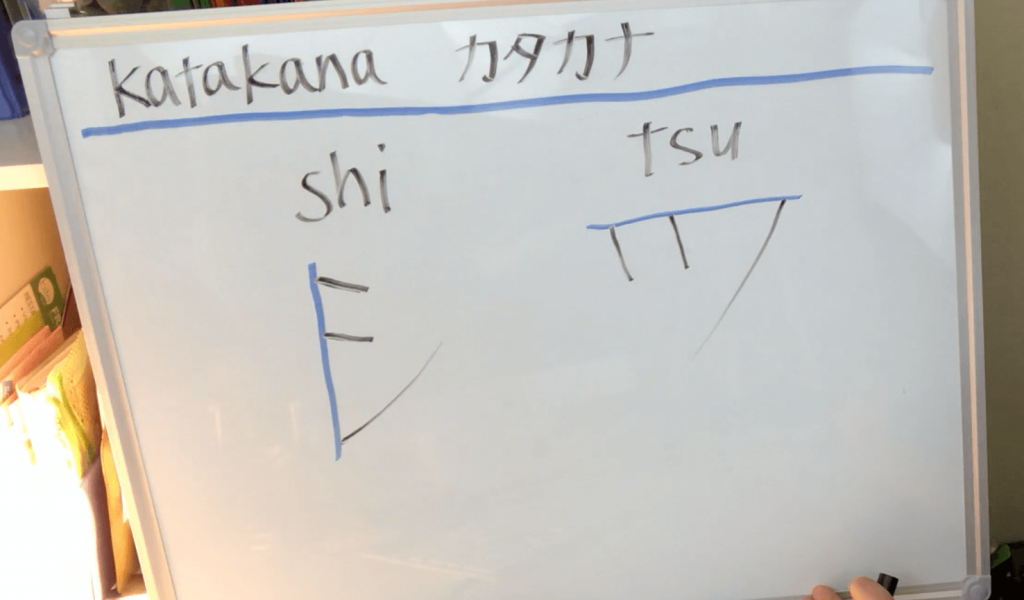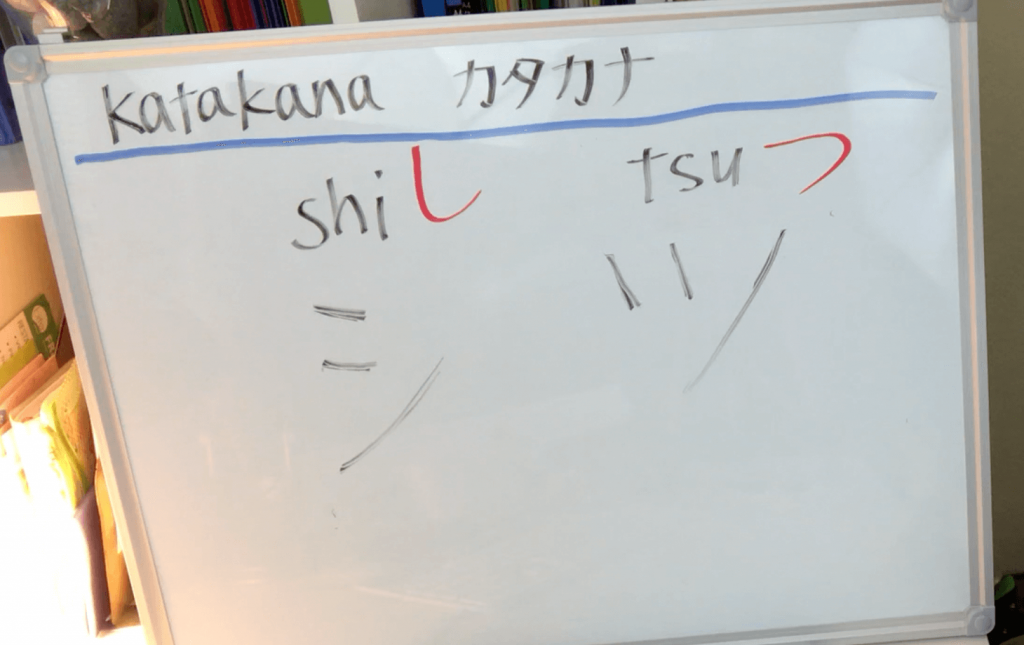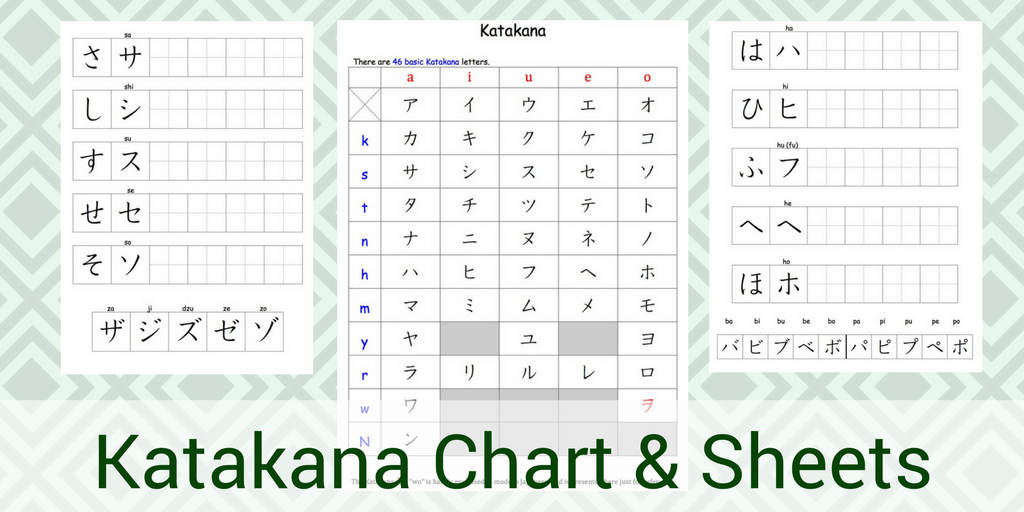Do you get confused between Japanese Katakana シ(shi) and ツ(tsu)? They look pretty much the same, don’t they? In this lesson, I share tips to differentiate between the two letters. Also, let’s learn how to write シ(shi) and ツ(tsu) correctly!
Katakana shi シ & tsu ツ are Similar
First, let’s learn how to write Katakana shi and tsu correctly. The major difference between the two is where you line up the three strokes in each letter.
For シ(shi), they are aligned on the left.
For ツ(tsu), they are aligned on the top.
Do you see what I mean in the image below? You may not see the clear difference in typed font of シ and ツ, but when you handwrite them, it is crucial to make the distinction.

Another key is to keep the third stroke of each letter not too long. So for シ(shi), the tip of the third stroke shouldn’t reach as high as where the first stroke is located. Likewise, the tip of stroke #3 for ツ (tsu) shouldn’t align with the first stroke.
How to Remember シ (shi) & ツ (tsu)
When you try to read a Katakana word that includes シ (shi) or ツ (tsu) and can’t remember which one is which, try to picture Hiragana し (shi) and つ (tsu).

Then, what you need to do is to see which Hiragana letter would nicely fit in the Katakana letter.
If you could fit Hiragana しnicely over the Katakana letter, that is Katakana シ.
If you could fit Hiragana つ nicely over the Katakana letter, that is Katakana ツ.
See the image below? Like this, you can use your Hiragana knowledge to figure out if the Katakana is シ or ツ. This tip has helped many of my students in my years of teaching, so I am sure it is going to be helpful for you too!

Learn Japanese Katakana
Are you still on the process of mastering Japanese Katakana letters? I have a complete Katakana lesson.
You can also receive a Katakana chart and practice sheets. Let me know where I should send them. They will be directly delivered to your inbox.

I hope this blog and lesson video was helpful for you to remember Katakana shi シand tsu ツ. Many students say Katakana is harder to master than Hiragana, but as long as you keep practicing you will become totally comfortable with Katakana. So, don’t give up and keep trying!
裕子先生(ゆうこせんせい)Yuko-sensei

Good Article ?
hello sensei, I’m from Malaysia ?? and I’m currently learning Japanese. Thank you for the explanation. It really helps me!
ありがとうございます。
ジアさん、どういたしまして。
I’m glad the explanation was helpful. ?
This lesson was great. It is the only clear explanation of this problem I have ever heard!
1) Could you do the same with “so” and “n” in katakana?
2) ALSO — very important! Could you show us written or printed examples of “tsu” and “shi” and “so” and “n” and help us figure out which is which WHEN WE READ THEM. Most students will have to READ these forms more than write them.
Do you give private lessons by Zoom? (I am a Zoom English teacher in the USA, also learning Japanese again.)
THANK YOU. SUCH A GREAT VIDEO
Christopherさん
I’m glad you enjoyed the lesson. As for how to recognize ツ (tsu) vs. シ (so) and ソ (so) vs. ン (n) is the same as the tip for writing. If you could draw a line on top by connecting the beginning of each stroke, it’s ツ (tsu) and ソ (so). If you could draw a line on the side, it’s シ (she) and ン (n).
I don’t do private sessions since I have so many students to support in my online courses. I correspond with them via comments/questions every day. You can join one of my courses if interested. https://smilenihongo.com/class
では、また!